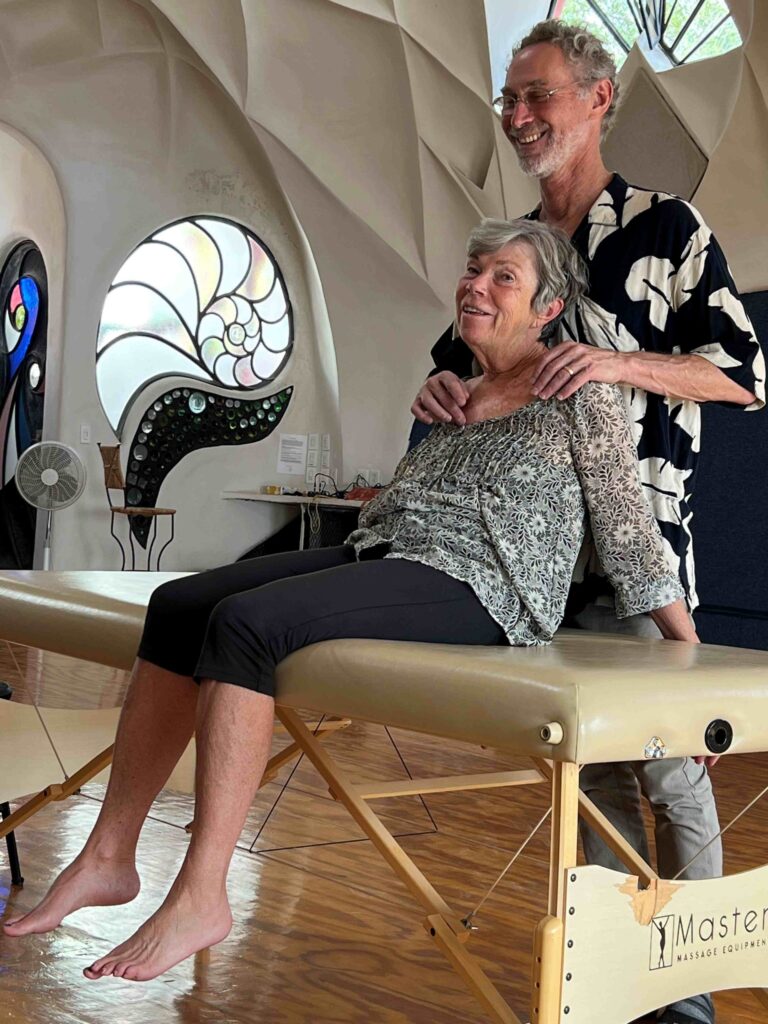About
About KRM
Welcome to KinEase Release MethodsTM, an easy to understand way of learning how to release the body from held patterns of tension and somatic dysfunction utilizing the understanding of how to reset to normal the muscle spindle sensory settings of the muscles involved in the aberrant vicious cycles of pain and hyperactivity.
Reboot and Restore the Body
With KinEase Release MethodsTM you will learn the causes of how the body gets into the predicament of “thinking” that an abnormal setting is what is normal and how to unlock that by placing the joint, muscle or connective tissue into a position of ease so that it can “reboot and restore” itself to the normal setting of length and flexibility it had before it received the traumatic, or perceived traumatic incident that caused it to go into “alarm mode”.
This can all be done without pushing, pulling , needling, massaging or any other invasive force.

About
About KRM
Welcome to KinEase Release MethodsTM, an easy to understand way of learning how to release the body from held patterns of tension and somatic dysfunction utilizing the understanding of how to reset to normal the muscle spindle sensory settings of the muscles involved in the aberrant vicious cycles of pain and hyperactivity.
Reboot and Restore the Body
With KinEase Release MethodsTM you will learn the causes of how the body gets into the predicament of “thinking” that an abnormal setting is what is normal and how to unlock that by placing the joint, muscle or connective tissue into a position of ease so that it can “reboot and restore” itself to the normal setting of length and flexibility it had before it received the traumatic, or perceived traumatic incident that caused it to go into “alarm mode”.
This can all be done without pushing, pulling , needling, massaging or any other invasive force.

Build Trust With Your Patients and Avoid Injury to Your Body
In KRM the actual point of dysfunction: the joint/muscle complex needing to be untangled is not touched, except to locate and monitor. All the practitioner must do is put it into a state of relaxation response by positioning. The body does the rest.
This method is not only relaxing and easy on the patient, but also is devoid of contraindications and negative side effects. Furthermore, it is easy on the practitioner and helps build a sense of trust between the practitioner and the patient. The patient themselves can learn how to do gentle unwinding practices on their own, and use this for home care or sports/dance maintenance.
The techniques applied to affect this physiological response always include positioning the joint or muscle into slack, and may also include: traction or compression, mobilization, or very light and rapid (small amplitude. high velocity) movement and simply time: 90 seconds to 2 mintes to effect the change.
The Muscle Spindle
The work is based on utilizing physiological discoveries by Irvin Korr, PhD, in the 1970’s, who came up with the theory of “The Facilitated Segment”, based on findings of the actions of the muscle spindle. The technique of release by positioning was discovered quite accidentally in the 1950’s by the osteopath Lawrence Jones before the theory of Dr. Korr was known, but once Dr. Korr discovered the role of the muscle spindle in muscle tension, Dr. Jones was able to interpret the theory to explain why his technique worked.
Techniques that use this physiological principle of slacking rather than thrusting include: Positional Release Therapy, Strain CounterstrainTM,, Orthobionomy and Facilitated Positional Release. I owe a lot to the progenitors of these techniques, Dr. Jones and others, as well as those that have continued to advance these techniques, such as Randy Kusonose PT, of the Jones Institute. Elements of all of these techniques will be blended with a knowledge of kinesiology to allow you, the practitioner, to think on your feet while you work with your hands.
The Golgi Tendon Organ
Dr. Feldman recently discovered that if he put together the theory of Dr. Jones on slackening the muscle to reset it, and the known functions of the GTO’s affect on the muscle spindle, he was able to release somatic dysfunction wherever he found it nearly instantly. This revolutionary finding has opened up a whole new paradigm in manual medicine that he brings to you in his courses. He calls this new method Quick Release TechniqueTM
We hope that you will be curious enough to add this wonderful method adjunct to your armamentarium of healing methods or even make it your main mode of employ.
